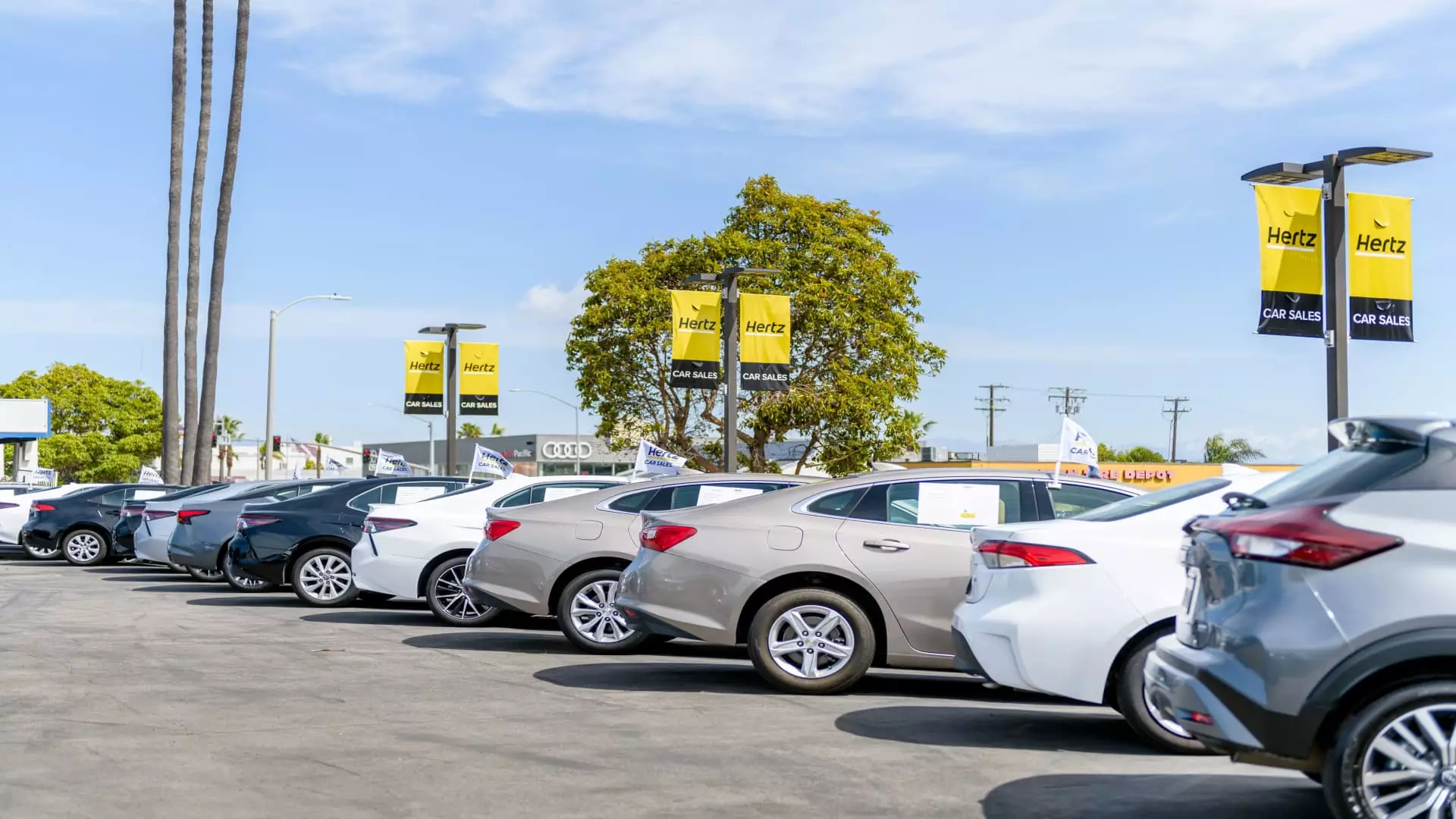Hertz’s recent venture into used car sales via Amazon Autos signals a dramatic shift in its business model—one that is both bold and fraught with peril. While many see this as an innovative step toward integrating digital retail into an historically traditional industry, it’s essential to scrutinize whether this move is rooted in strategic necessity or mere desperation. The alliance with Amazon, a behemoth in e-commerce, offers Hertz the visibility it desperately craves after its tumultuous bankruptcy and failed EV ventures. However, the underlying question remains: Is this partnership genuinely built to endure, or is it merely a bandage on deeper operational flaws?
What appears to be a smart maneuver on paper—leveraging Amazon’s broad customer reach—may overlook the actual complexities of used vehicle sales. The automotive retail sector involves intricate logistics, inspections, warranties, and a nuanced understanding of market demand. Relying solely on an online marketplace risks distorting customer expectations and neglecting the importance of local experience. Such digital-first strategies often overpromise and underdeliver in terms of customer satisfaction, especially in an industry that still heavily relies on personal trust and physical inspection.
The Strategy or the Sound of a Company Trying to Rebrand?
Hertz’s push into digital retail seems driven by a desire to reposition itself as more than just a rental company. Yet, this strategy raises doubts about the company’s core capabilities. After a near-decade of missteps—from filing for bankruptcy during the COVID-19 pandemic to scrambling with an ill-fated EV push—Hertz’s leadership appears increasingly desperate to diversify revenue streams. The “Back-to-Basics Roadmap,” emphasizing fleet management and cost efficiency, indicates acknowledgment of past mistakes but lacks a clear indication of sustainable innovation.
Furthermore, this partnership with Amazon Autos, while seemingly promising, might be more about gaining fleeting market attention than establishing a long-term competitive advantage. The used car marketplace is fiercely competitive, filled with established players like CarMax and local dealerships that boast better customer relationships and more tailored services. Hertz risks being drowned out in this crowded space, especially if it lacks the infrastructure and expertise to match offer quality and consumer trust.
The Illusion of Convenience and the Hidden Risks
Although the “digital” approach promises convenience—esigning paperwork, online browsing, and a streamlined purchasing process—the reality of buying used vehicles isn’t that simple. Customers often demand transparency, warranties, and post-sale support—all of which require significant operational investments that Hertz may not be prepared for in its current state. The decision to initially limit browsing to four cities—Dallas, Houston, Los Angeles, and Seattle—underscores the limited scope and perhaps the over-optimism surrounding this initiative.
Additionally, Hertz’s reliance on Amazon Autos could create a disconnect between online promises and physical realities. Customers who purchase remotely may feel less confident about the vehicle’s condition or provenance. With no physical inspection, trust becomes harder to establish. If issues arise post-purchase, Hertz and Amazon might be ill-prepared to address complaints, risking reputational damage that could outweigh any short-term profit gains.
A Symptom of a Larger, Structural Issue
At its core, Hertz’s move exemplifies a broader industry trend—retailers desperately trying to claw back market share through digital channels amidst declining demand for traditional rental services. While the Rent2Buy program indicates an effort to innovate, it also exposes Hertz’s limited actual assets in the used car retail space. Simply put, Hertz’s core competency remains fleet management and rentals, not retail sales.
The partnership with Amazon is a double-edged sword: it offers exposure but also exposes Hertz’s operational weaknesses. Without a robust infrastructure for vehicle inspection, servicing, and customer care, this strategy could merely be a quick fix—a distraction from fundamental issues like profitability, fleet optimization, and sustainable growth.
In the end, Hertz’s expansion into used car sales via Amazon Autos underscores a critical reality: that in today’s market, trend-chasing without strategic differentiation is a risky gamble. For a company still healing from past missteps, it’s a dangerous game to place so heavily on a digital sales model that has yet to prove it can reliably deliver customer satisfaction at scale. Whether this move signifies resilience or recklessness remains to be seen, but intelligent observers should be cautious in celebrating a future built on what may be nothing more than a high-stakes digital illusion.

